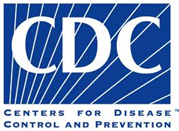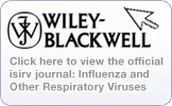News: Influenza A(H5N1) and (H7N9)
| General news | Influenza A(H5N1) and A(H7N9) | Novel coronavirus (MERS-CoV) | ||||
| General information on influenza A(H5N1) and A(H7N9) infection | |
| Updates on Human Infection by Influenza A(H5N1) and A(H7N9) viruses | |
| Updates on human infection by influenza A(H5N1) and A(H7N9) are published by WHO. The WHO and ECDC have published updated risk assessments. The WHO risk assessment can be found here, and the ECDC risk assessment here. The WHO has also published update background and summary information on human infection with influenza A(H7N9) available here. | |
| |
Consortium for the Standardization of Influenza Seroepidemiology (CONSISE) |
|
CONSISE is a global partnership aiming to standardize influenza seroepidemiology and develop comprehensive influenza investigation protocols to inform public health policy. For more information about CONSISE, see www.consise.tghn.org. CONSISE has developed epidemiologic protocols and laboratory assay protocols for influenza A (H7N9) investigations. These are described at: http://consise.tghn.org/articles/consise-and-avian-influenza-h7n9/ |
|
 |
World Health Organisation (WHO) |
| Information published by WHO, including case numbers, technical guidance and frequently asked questions, is available at: http://www.who.int/influenza/human_animal_interface/influenza_h7n9/en/index.html | |
 |
European Centre for Disease Prevention and Control (ECDC) |
| Information published by ECDC, including epidemiological updates, risk assessments and technical documents on laboratory diagnostics in Europe, is available at: http://www.ecdc.europa.eu/en/healthtopics/avian_influenza/Pages/index.aspx | |
| World Organisation for Animal Health (OIE) | |
| Information published by OIE, including questions and answers and notifications of outbreaks of H7N9, is available at: http://www.oie.int/animal-health-in-the-world/web-portal-on-avian-influenza/ | |
 |
Centres for Disease Control and Prevention (CDC) |
| Information published by CDC is available at: http://www.cdc.gov/flu/avianflu/h7n9-virus.htm | |
| Links to specific resources about influenza A(H7N9) | |
| Influenza A(H7N9) neuraminidase resistance without loss of in vivo virulence or transmissibility (11 December 2013) | |
| Researchers from the Icahn School of Medicine at Mount Sinai have reported that oseltamivir-resistant strains of influenza A(H7N9) transmit and cause disease as efficiently as strains that are sensitive to the neuraminidase inhibitor class of drugs. The report raises concern as antiviral medication is a key treatment and prevention measure in the absence of a vaccine against the novel strain. The full paper can be accessed at: http://www.nature.com/ncomms/2013/131210/ncomms3854/full/ncomms3854.html | |
| Study outlines difficulties in detecting H7N9 antiviral resistance (17 July 2013) | |
| Research published in the journal mBio, the online journal of the American Society for Microbiology (ASM), provides further data on cases of influenza A(H7N9) antiviral resistance detected in Shanghai in May 2013. The researchers undertook detailed characterisation of an isolate obtained from the first confirmed human case of infection in China, two days after Oseltamivir treatment had been commenced. They found that whilst the clinical isolate exhibited a phenotype of sensitivity to NA-inhibitors using the enzyme-based NA inhibition assay, genetic analysis revealed a mixture of H7N9 variants. One of the variants, K292, was resistant to the neuraminidase inhibitor class of antiviral drugs, including oseltamivir, zanamivir and peramivir. The authors conclude that resistance to NA inhibitors conferred by the R292K mutation in a human H7N9 isolate can be masked by a mixed R/K viral population, and this should be taken into consideration when monitoring antiviral resistance in patients with H7N9 infection. The full paper can be accessed at: http://mbio.asm.org/content/4/4/e00396-13.full |
|
| First clinical confirmation of influenza A(H7N9) resistance to Tamiflu (28 May 2013) | |
| Research published today in the Lancet documents the first clinical cases of resistance to Tamiflu (Oseltamivir) and similar neuraminidase inhibitor drugs in people infected with influenza A(H7N9) infection. Researchers analysed the viral load of 14 patients throughout the course of their illness and found that for most, treatment with neuraminidase inhibitor drugs resulted in a reduction in the viral load found on throat swabs and was associated with clinical recovery. However, for three patients who became severely ill, antiviral treatment did not reduce their viral load. The researchers found a genetic mutation characteristic of resistance to neuraminidase inhibitors (Arg292Lys). In one of the patients this mutation appears to have arisen as a result of treatment with Tamiflu, leading to concerns that it might arise in response to treatment with neuraminidase inhibitors. The paper can be accessed at: http://download.thelancet.com/flatcontentassets/pdfs/S0140673613611253.pdf |
|
| Interactive maps of influenza A(H7N9) human cases (24th April 2013) |
|
| The journal Nature has published interactive maps of the human cases of influenza A(H7N9) infection available at: http://www.nature.com/news/mapping-the-h7n9-avian-flu-outbreaks-1.12863 | |
| Eurosurveillance publications on laboratory detection (19th April 2013) |
|
| Two papers published online in Eurosurveillance describe detection of novel influenza H7 viruses through real-time reverse-transcription PCR and sequence analysis respectively. | |
 |
CDC guidance on antiviral agents and infection control (19th April 2013) |
| CDC has published interim guidance which makes recommendations for antiviral treatment of confimed cases, probable cases, and cases under investigation of human infection with avian influenza A(H7N9) in the United States. The guidance is available on the CDC website. CDC has also published interim guidance on infection control in healthcare settings when caring for patients with confirmed, probable or cases under investigation of influenza A(H7N9) virus infection. |
|
| Publications on the virological features of avian influenza A(H7N9) | |
| The WHO Regional Office for Europe has published a report on the public health relevant features of influenza A(H7N9). The pdf report can be accessed here. The journal Eurosurveillance has published an editorial entitled 'A novel reassortant avian influenza A(H7N9) virus in China - what are the implications for Europe'. The article can be accessed here. A paper published in Eurosurveillance provides an analysis of the genetic sequence from the first Chinese patients infected with H7N9 and from poultry markets. The results indicate that the virus can attach and replicate efficiently in the airways of humans and other mammals, raising concerns about the pandemic potential of the virus. The paper can be accessed here. The results affirm findings published the previous day in the New England Journal of Medicine on the genetic analysis of the first three human cases of H7N9 infection in China. The paper describing the clinical illness in three early fatal cases is available here, and the accompanying commentary here. |
|
| Antiviral susceptibility of avian influenza A(H7N9) (7th April 2013) |
|
| Preliminary laboratory studies conducted in China and reported by the China Food and Drug Administration indicate that the neuraminidase inhibitor Peramivir, may be effective in treating infection with influenza A(H7N9) when administered in a saline injection. The report is available through ProMED on Sunday 7th April. | |


